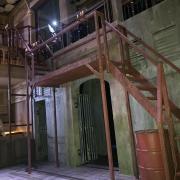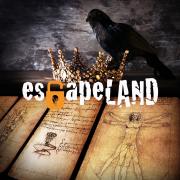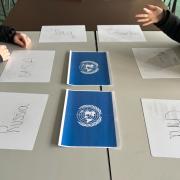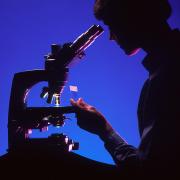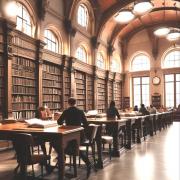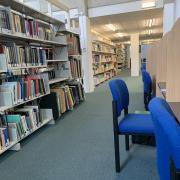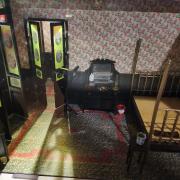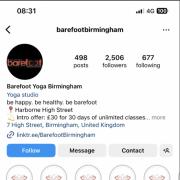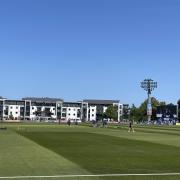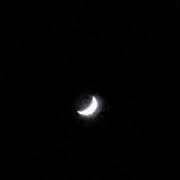
Greenwich portraits 2019 is the 4th instalment of the University of Greenwich’s annual celebration of outstanding alumni and current students. Each participant’s story reflects their journey before, during and after Greenwich and celebrates the impacts they are/were making in their chosen fields.
The beautiful portraits developed each year as part of the project have become an ever-present sight around the university and are a daily reminder to students, staff and the local community of the power of a Greenwich education. Each of the new and previous portraits are a testament to the continued diversity of fields in which Greenwich graduates are making their mark, both in the UK and globally. With over 70 celebrated alumni spanning the fields of sport, politics, business, science,engineering, media and the arts, there are plenty of extraordinary stories to uncover. The new portraits feature, among others, a sibling football management team, an award-winning author and several leading TV producers
One of the most inspiring individuals in this year’s collection is the Greenwich born amateur astronomer, Ewen Adair Whitaker FRAS (1922-2016). Mr Whitaker attributed his interest in science to an encyclopedia he received for Christmas when he was 8 years old and a scholarship to The John Roan School (formerly the Roan Boys Grammar). Hired as a lab assistant for the electrical engineering company Siemens, Mr Whitaker was tasked with carrying out quality control on the lead sheathing for underwater gasoline pipes, where he mastered spectroscopy (the analysis of metals on Earth and the study of radiation from stars and galaxies).Exempted from military service to continue his spectrochemical work on the top-secret Pluto project, which was vital to the war effort in advance of the D-Day Landings, he earned a certificate in mechanical engineering from Woolwich Polytechnic, the founding institution of the University of Greenwich.
When subsequently working as an astronomer at the Royal Observatory, Mr Whitaker became Director of the Lunar Section of the British Astronomical Association (BAA) and Fellow of the Royal Astronomical Society (RAS). In 1955, Mr Whitaker responded to Dr. Kuiper’s request from the International Astronomical Union (IAU) Conference for assistance in creating an improved photographic lunar atlas, resulting in the humble Greenwich astronomer receiving an invite to the Yerkes Observatory to collaborate with Dr. Kuiper, arriving on the dawn of the space race, the day after the Soviet Union had launched Sputnik 1. He moved to the states with his young family just as the Royal Observatory in Greenwich ceased to function.
In 1960, Dr. Kuiper and his team relocated from Yerkes to the University of Arizona where they founded the Lunar and Planetary Laboratory in Tucson. Whitaker's contribution to NASA's success in lunar navigation was inter alia his application of the Zwicky technique of differential UV/IR photography to the Moon, enabling him to map areas of differing chemical composition on the lunar surface.
In 1969, Whitaker was given the difficult job of choosing the targeted landing site of NASA's Apollo 12 mission, deliberately set to recover the abandoned lunar probe Surveyor 3, with a mission to demonstrate pin-point landing capabilitiy after the near crash landing of Apollo 11. With echoes of his early career in Greenwich, the landing site coordinates that he helped inform were listed as a 'known anchorage' (Statio Cognitum). But what makes this so inspirational, other than the fact that this man was Greenwich born? Mr Whitaker’s certificate from Woolwich Polytechnic was the only academic qualification he held throughout his career, allowing him to work as a peer with famous scientists like Kuiper, Sagan, Shoemaker and Nobel Prize winner Harold Urey. Ten years after his retirement, the University of Arizona awarded Ewen an honorary doctorate of Associate Research Scientist Emeritus, the citation concluded he’d retired, “after a long career spent in service to science and to mankind”.
Mr Whitaker joins three other science and engineering alumni, whose Alma Mater was Woolwich Polytechnic, and who have been included in previous Greenwich Portraits. Thomas ‘Tommy’ Flowers was the lead architect behind Bletchley Park’s ‘Colossus’ computer, which made a vital contribution, not just to the birth of computing but to the end of the Second World War. Born in East London in 1905, Tommy secured an apprenticeship at the Royal Arsenal. In 1922, he enrolled in evening classes at the Woolwich Polytechnic where he passed the Intermediate Exam in Engineering in 1926, providing the foundation of his future success and enabling him to gain a degree through the University of London. During World War Two, Tommy worked with Alan Turing on designs to break Germany’s enigma code. Mr Flowers proposed ‘Colossus’, widely regarded as the world’s first electronic programmable computer, which entered service in 1944, providing vital intelligence for the D-Day Landings-which is believed to shorten the War by two years.
Sir Charles Kao, dubbed the ‘Father of Broadband’, was awarded the Nobel Prize in Physics in 2009 for his ground-breaking research into fibre optics. Born in Shanghai and brought up in Hong Kong, Sir Charles came to the UK to study Electrical Engineering at Woolwich Polytechnic, graduating in 1957. Sir Charles pioneered the development and use of fibre optics in telecommunications, paving the way for today’s digital age and enabling the development of the Internet. Unfortunately, Sir Charles Kao passed away last year, but his discoveries in regard to fibre optics have proved instrumental to the digital revolution.
The Woolwich Polytechnic was setup in 1891 to provide education for the working class in the Royal Arsenal. In fact, the Polytechnic’s objective was, “the promotion of industrial skill, general knowledge, health and well-being of young men and women belonging to the poorer classes”. In 2001, the Woolwich Polytechnic (or as it was now known, The University of Greenwich) gave up its main campus in Woolwich, relocating to its current main campus in the Old Royal Naval College, formerly the Royal Greenwich Hospital, designed by Sir Christopher Wren in 1692. The campus’s library is located in Stockwell Street, which houses the Stephen Lawrence Gallery (where the current Greenwich Portraits 2019 can be viewed for free until the 15th of March). Greenwich is an area that has always been of historical significance, and the work carried out by past, current and future students will only cement its legacy as the home of time and space.












